The use of permanent magnet alternators (PMAs) for power generation has become a widespread application because they deliver power simply and reliably. PMAs can be found in renewable energy systems, operating in off-grid conditions, in industrial machines, and in backup power supplies. Their inventors have made these devices tough, power-saving, and they require less maintenance than other types of power sources. If one is looking for a PM alternator, they must be aware of the main aspects of these machines and also know how to screen and find the best available alternatives. This post will outline what you should know about PMAs, serving as a guide that explains the benefits of PMAs and their application in specific cases. Stick with us as we review all the critical information to help you make an informed purchasing decision.
Understanding Permanent Magnet Alternators
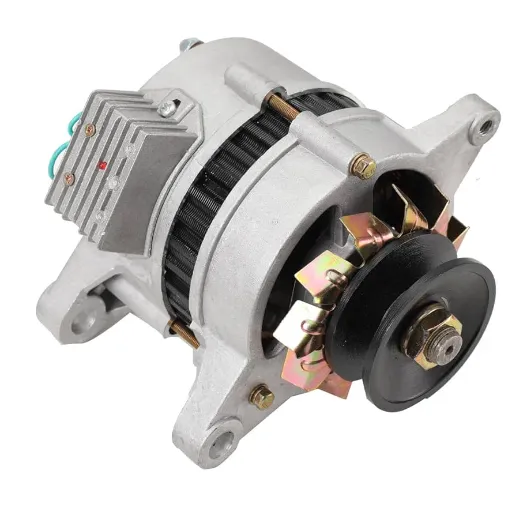
PMAs are machines that work on the principle of conversion of mechanical energy into electrical energy, which is then supplied to a load. Instead of the traditional configuration with field windings, PMAs have the magnetic field created by permanent magnets. The integration of permanent magnets opens the door to significant energy savings and enhanced power control. Operating PMAs leads to high efficiency, quality, and stability of power supply, among other benefits, which is why they are highly required in applications such as renewable energy, UPS systems, and small generators.
Compared to traditional alternators, PMAs typically have a layout that delivers better power in less space, with lighter weight and higher durability. Furthermore, PMAs are less maintenance-requiring and operate more efficiently at lower speeds; thus, they are the best choice for many different applications. Indeed, knowing and understanding these benefits is highly important when determining whether a PMA is the right option for a particular need.
What is a Permanent Magnet Alternator?
A Permanent Magnet Alternator (PMA) is an electrical generator that produces power through the use of permanent magnets, requiring no external field excitation system, unlike traditional systems. Thanks to this innovative approach, we can now bid farewell to outdated elements such as brushes and slip rings, making the production process and maintenance significantly easier. It is no secret that PMAs are a class apart, while simultaneously using energy almost without loss and producing power of exceptionally high quality, even at the lowest possible speed. Their presence in wind turbines, hydroelectric systems, and portable generators, for example, is not accidental, as these are the places where the demand for complete reliability and the supply of energy with the best efficiency are paramount. Additionally, the use of permanent magnets is also beneficial in reducing wear and tear, thereby indirectly increasing the operational time. Nevertheless, PMAs, by generating clean and efficient power, are becoming increasingly the best choice in the context of modern energy solutions.
How Permanent Magnets Function in Generators
The magnetic field formed by permanent magnets in generators interacts with conductive materials, such as copper, in the generator’s coils. Hence, this interaction is responsible for generating an electric current through the practice of electromagnetic induction. On the one hand, unlike mechanical generators that require the input of electric energy to the electromagnets’ coils for their rotational motion, permanent magnetic generators naturally establish and sustain a static magnetic field through their poles, and their permanent magnets are never dissipative, producing more energy-efficient results. Moreover, the implementation of features such as rare-earth materials, especially neodymium, in magnet technology has, through the years, continued to make magnets even more powerful as well as longer-lasting, and the power density has likewise been influential in a similar manner through technology, also higher, and hence, producers have evidence of more performance abilities. Accordingly, all this has undergone a significant transformation, and nowadays, with the support of compact and efficient generator design, there is no single larger industrial sector that does not utilize permanent magnets.
Benefits of Using Permanent Magnet Generators
- High Efficiency
Typically, Permanent Magnet Generators (PMGs) achieve an efficiency of up to 95%, which is one of the main reasons for this high value of efficiency – no more power is required to excite the generator (due to the permanent magnets’ constant magnetic field). - Compact and Lightweight Design
Permanent Magnet Generators (PMGs) are among the generators with the highest flux density, resulting in very compact and lightweight designs compared to traditional generators that require mechanical parts to create excitation. An example of a PMG is a device that can deliver the same power output as a regular generator, but with up to 30% less weight and size, making it very suitable for situations where weight and space are limitations. - Low Maintenance Requirements
The design of a PMG alone is one way to cut maintenance costs. Differently, brushless and stand-alone excitation systems have fewer moving parts and hence fewer wear-and-tear issues. This will also mean that the systems have longer lifespans and, in most cases, continue to function perfectly for several decades. - Operational Reliability
The uncomplicatedness and robustness of PMGs allow for great reliance on them in all kinds of climates. There are even the best in freezing conditions or when placed in the harshest locations, such as offshore wind farms or isolated areas, ensuring performance throughout their lifetime. - Energy Independence
Energy independence is one of the significant merits of PMGs, as they do not consume power to establish and maintain the field. It is for this reason that they are energy-efficient in renewable systems, such as wind turbines or hydroelectric plants, where every bit of energy is not only precious but also conserved. - Environmentally Friendly
PMGs help the Earth become a better place in terms of energy by increasing overall system efficiency and reducing emissions within their application. The reason is that they do not consume copper bushes or other materials that need to be frequently replaced, and they can also be seen as the waste minimizers of their lifecycle.
Types of Permanent Magnet Alternators
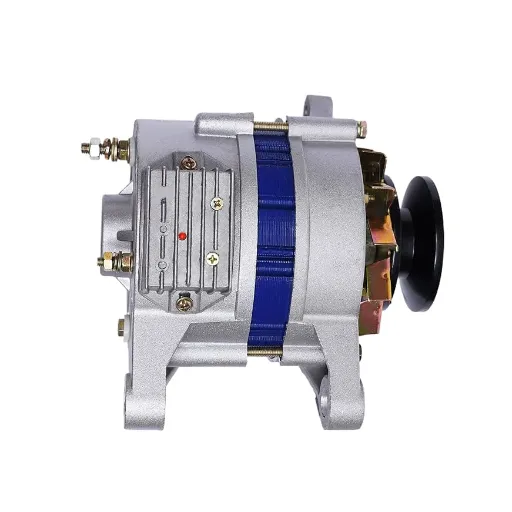
The construction type and field of application are the main criteria for dividing all Permanent Magnet Alternators (PMAs) into the following types:
Axial Flux PMAs
The alternators are of a small size and typically operate at low speed. They are very much required in windmills. Lightweight and high-power density enable them to be a good match for industries with space-saving needs.
Radial Flux PMAs
Radial flux alternators are the most versatile, with the broadest range of applications. They are very energy-efficient and adaptable to various systems, ranging from automobiles to power generation to general-purpose applications.
Brushless PMAs
The brushless types do not require consumables like carbon brushes, which is why they offer high reliability and a long-lasting, maintenance-free feature. Under such belt-and-braces circumstances, alternators are the best choice for running uninterrupted for long periods in environments requiring a long product lifecycle.
Coreless PMAs
These alternators of axially active type do not contain an iron core. Therefore, they require lower power and, at the same time, are more likely to be weight-reduced. Aerospace and precision instruments are good examples of where these alternators are most suitable.
Each Permanent Magnet Alternator (PMA) type is manufactured to fulfill the needs of various power and mechanical systems, making them versatile tools in the energy generation field.
Low RPM Permanent Magnet Alternators
Low RPM Permanent Magnet Alternators are customized to deliver precisely the right power until the final disposal of energy at very low speeds. They become convenient, mainly in fascinating energy sources, such as wind, water, and low-speed engines, where steady energy sources are a must, besides not relying on high speeds. The use of high-flux-density magnets and optimized winding designs characterizes the typical construction of these machines, resulting in high torque and energy efficiency. The durability and performance of the machines have also been further improved through the constant introduction and adoption of new materials and engineering innovations, making it possible for the machines to run stably even when subjected to a sequence of operations or harsh environmental conditions. The alternators require only periodic maintenance activities to be performed, and they can be operated in a way that enables them to serve as key players in the provision of sustainable energy in various industrial sectors.
12 Volt and 24 Volt Permanent Magnet Generators
One of the most significant advantages of 12 and 24 Volt permanent magnet generators is their energy-saving and highly reliable features in various applications. The generators themselves are the result of the most recent technology in the field of permanent magnets and are therefore very energy-efficient. The feature that also attracts the most is their very compact size, in addition to being lightweight, which are characteristics that make these generators suitable for both stationary and portable applications. The 12 Volt generators, which are mainly used for smaller systems, are great for converting battery power to household power. They are also handy for rural electrification needs or any off-grid setup. However, the 24 Volt generators are most suitable for places that require a much higher voltage input, such as industries and other locations where large machinery or renewable energy sources, like windmills, are used.
Brushless Permanent Magnet Generators
One of the primary reasons brushless permanent magnet generators (BPMGs) are the preferred choice for today’s applications is their loss-free operation. They are very efficient as they do not have brushes, or they have reduced mechanical wear, which significantly decreases the maintenance needs. Moreover, BPMGs as energy conversion devices produce heat losses that are lower than those of their counterparts, power electronics, which is another visible benefit in the case of continuous operations. They are tiny and lightweight; hence, the best examples of environments where the two most common concerns are space and weight are wind turbines, ship engines, or portable renewable energy sources. High reliability also stems from the fact that they can provide a stable output voltage regardless of the load, a feature that is as important and beneficial in the industry as it is in residential applications. In the future, as permanent magnet technology gets better, the manufacturing and operating costs of the BPMG will decrease, and its deployment in various sectors will become less expensive and more accessible.
Applications of Permanent Magnet Alternators
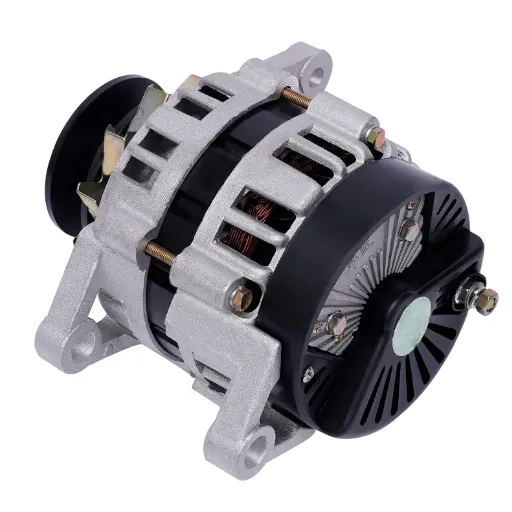
Permanent Magnet Alternators (PMAs) are among the most versatile tools in the industry due to their high energy productivity and widespread application across various industries. A few of the most remarkable uses are:
Renewable Energy Systems
When it comes to energy generation in the wind industry, PMAs are a surprisingly often-seen element that wind utilizes most efficiently. Apart from the above, they are also compatible with small-scale hydroelectric installations.
Marine Power Systems
The marine industry extensively works with PMAs, which are the primary source of power for vessels, providing reliable onboard power.
Backup Power Solutions
PMAs are preferred foreground components in the case of standby generators, with the role of ensuring an uninterrupted power supply when the mains are down.
Remote and Portable Power
PMAs are among the most portable and off-grid-friendly power-generating solutions, primarily because they are highly efficient and mobile.
PMAs are still very important for powering sustainable energy and industry with their high-performance, which is reliable and efficient.
Using Permanent Magnet Alternators in Wind Turbines
The efficiency and reliability of wind turbine technology have been improved by the emergence of Permanent Magnet Alternators (PMAs). An efficient and reliable magnetic field power source is created by using permanent magnets as the exciter. This source of power is superbly responsible for reducing energy loss and enhancing the overall performance of the system. The efficiency of the PMA system at lower speeds of operation is already achieved by this design, which is very important as one seeks to maximize the energy taken from the wind under variable conditions.
Furthermore, PMAs have a significant impact on reducing maintenance burdens associated with wind turbines. The nonexistence of items like brushes in such alternators leads to fewer wear-and-tear problems, which is the reason for the long-term operation of these machines and the absence of downtime. New PMAs are designed to be not only small but also lightweight, allowing them to be easily integrated into the turbine’s system. To sum up, all these factors, combined with the increased need for sustainable energy, make PMAs a crucial element in boosting wind energy generation.
Permanent Magnet Generators for Low RPM Applications
Low-speed applications are an excellent environment for PMGs due to their efficiency and reliability; they are ideally suited for this purpose. PMGs, in contrast to traditional generators, can deliver considerably larger power even when rotating slowly and thus are excellent for applications such as small wind turbines, hydroelectric systems, and other renewable energy sources. The permanent magnets that produce strong magnetic fields are the main reason why PMGs can efficiently generate electricity without needing high RPMs. Aside from that, PMGs not only simplify system design but also eliminate the need for complex gearbox systems. Likewise, the use of PMGs in place of conventional systems significantly reduces the number of mechanical failure locations, thereby enhancing the overall system performance and energy efficiency.
PMGs are also less costly in terms of maintenance, particularly in cases of low RPMs, because they do not have brushes and other parts that wear due to friction. In cases where consistent energy output at different speeds is inevitable, these are the best performers among other generators; hence, their attractiveness and demand in the renewable energy sector are significantly increased. Additionally, the PMGs’ acceptance as an essential component, their long lifespan, and their ability to operate efficiently under changing environmental conditions are the primary reasons for the cementing process.
Advantages of AC Output from Permanent Magnet Generators
- High Efficiency at Variable Speeds
The use of Permanent Magnet Generators (PMGs) in wind and hydroelectric installations significantly increases overall system efficiency, even when variable rotational speeds are involved. PMGs are also very maintenance-friendly. They can easily supply the same amount of energy without the use of gearboxes and converters, which also reduces energy losses. Studies have shown that PMGs can be as efficient as, and even surpass, 90%, making them the best choice for wind and hydroelectric energy systems. - Reduced Maintenance Requirements
PMGs without brushes and external excitation systems are characterized by extremely low wear and tear. This leads to a significant reduction in maintenance frequency compared to generators, and thus, to an increase in operating cost and overall system performance reliability over long periods. - Compact and Lightweight Design
PMGs are designed to be both compact and lightweight, making them easy to integrate into various energy systems. Hence, this is a very good thing, as systems like offshore wind turbines and portable renewable energy units will be more effective since they are less likely to be hindered by space and weight requirements. - Improved Power Quality
The AC output voltage from the PMGs is in the form of a high-quality sine wave, which is a characteristic of a very steady and clean power supply. This is a significant advantage for applications that require the voltage and frequency to be nearly constant, such as precise instruments, as well as those connected to grid-based utilities and renewable sources. - Adaptability to Harsh Conditions
PMGs are the best option for locations with challenging conditions, such as high altitudes, offshore wind farms, and areas with significant temperature fluctuations. They have been designed to last for a very long time and to be highly reliable under any circumstances, allowing for the lowest possible downtime and the highest energy production. - Environmentally Friendly Energy Production
No petrol and virtually silent operation, PMGs fulfill global sustainability objectives. Their exclusive technology, which enables mechanical energy to be converted directly into electrical energy without the need for any additional parts, is in fact a more ecological and indigenous alternative to traditional generation methods, thereby reducing the overall environmental impact.
Buying Considerations for Permanent Magnet Alternators
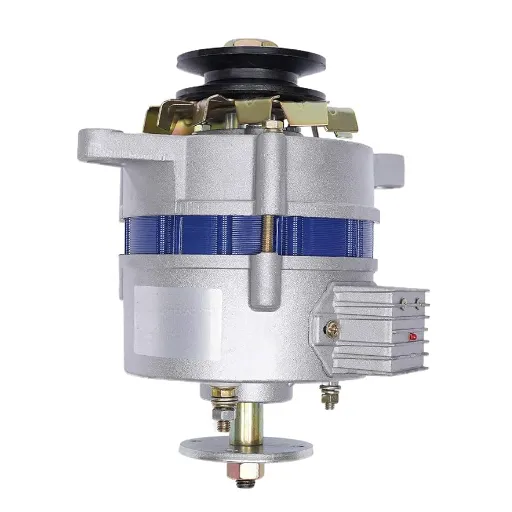
Power Output Requirements
You must decide on the exact power output you are aiming for in relation to the application. Buying an alternator with a capacity large enough to handle the load safely will prevent any power losses and faults due to excessive stress.
Efficiency
Choose an energy-efficient model that will pay off the initial cost through the savings in the future and betterment of operational costs throughout the usage of the equipment.
Durability and Build Quality
Check that the alternator is built with sturdy materials to adapt to all weather conditions and meet the long-term performance.
Size and Weight
Select a generator that can be physically installed and is, at the same time, if necessary, portable.
Voltage and Frequency Compatibility
Verify that the alternator’s output voltage and frequency correspond to the specifications of your electrical system.
Maintenance Needs
Prefer a model that is high on maintenance, thus you save time, and the costs for it decrease.
Comparing Different Models of Permanent Magnet Generators
| Model | Power Output | Efficiency | Voltage Range | Weight | Maintenance Requirement | Key Features |
|---|---|---|---|---|---|---|
| Siemens Synchronous PMG | 10-500 kW | High | 120-480V | Moderate | Low | Robust and durable design |
| ABB Permanent Magnet Generator | Up to 6.5 MW | Very high | Customizable | Heavy | Minimal | Ideal for wind turbines |
| GE DirectDrive PMG | 2.5 MW and up | Exceptional | Wide range | Heavy | Minimal | Enhanced direct-drive tech |
| B&R IEC PM Motors | 1-500 kW | High | 100-400V | Lightweight | Low | Compact for small spaces |
| WEG Permanent Magnet Motor | 0.75-355 kW | High | Multiple variants | Moderate | Moderate | Energy-efficient operation |
| Mitsubishi Electric PM Generator | 4-10 MW | Very high | Customizable | Heavy | Low | Used in large-scale systems |
| Toshiba PM Generator | Up to 2.5 MW | High | 480V | Heavy | Minimal | Superior load adaptability |
Where to Find Permanent Magnet Alternators for Sale
For individuals seeking the availability and sales of permanent magnet alternators, reputable manufacturers and dealers are a good starting point, as they offer products with diverse characteristics and pricing options. ABB, Siemens, and General Electric are companies that have made significant advancements in the provision of a diverse range of permanent magnet alternators, primarily used in industrial and commercial applications. GlobalSpec and DirectIndustry are online marketplaces that also serve as trainers, providing a comprehensive view of offerings from multiple suppliers’ online showrooms. If that is not enough, authorized distributors like Motion Industries and Grainger still have a substantial inventory in their warehouses, suitable for varying power ratings and customer requirements. An excellent venue to discuss the situation and requirements in detail and obtain a competitive price estimate is to connect with Mitsubishi Electric or Toshiba by reaching the manufacturers directly, particularly for those seeking completely bespoke solutions or large-scale plants.
Final Thoughts on Permanent Magnet Alternators
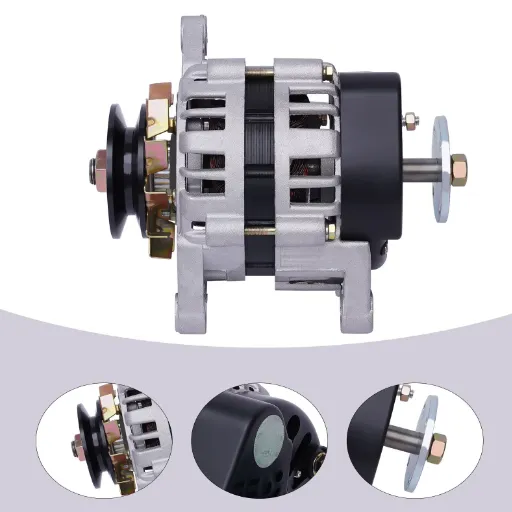
Permanent Magnet Alternators (PMAs) are components that are reliable, efficient, and versatile for a wide range of applications, including renewable energy systems and industrial equipment. PMAs are a long-term and cost-effective choice owing to their high efficiency and low maintenance needs. Thus, the selection of a PMA is strictly a consideration of factors such as power capacity, durability, and construction to suit your specific needs. By acting together with reputable manufacturers or distributors, it might be guaranteed that the proper alternator for your requirements is the one on the very list. A well-balanced mix of care and integration can achieve continuous performance and substantial energy savings through PMAs.
Future Trends in Permanent Magnet Technology
The domain of permanent magnet technology is advancing rapidly due to the increasing demand for energy-efficient solutions across various segments. An unmistakable trend is the development of high-performance, rare-earth-free magnets that aim to reduce dependency on rare and costly materials without compromising high magnetizing power. Additionally, nanostructured magnetic materials are behind the argument that new ideas must be implemented to achieve superior efficiency and functionality, empowering applications with high energy density and temperature resilience.
Moreover, the advancements in additive manufacturing technologies have enabled the printing of 3D magnetic components. The process is taking on a new direction, as it not only allows for product customization but also saves material and reduces waste. Additionally, the field of innovative technologies is being increasingly supported by the inclusion of permanent magnets, which are providing renewable energy systems, primarily in wind turbines and electric vehicles. These represent areas that require solutions to be both very light and strong at the same time. All these prophecies point to a future in which permanent magnet technology becomes both truly sustainable and high-tech simultaneously.
Resources for Further Exploration
Looking for the most comprehensive sources of the latest developments in permanent magnet technology, including applications to renewable energy and transportation markets.
Has in-depth reports and articles about the use of permanent magnets in creating a green future, particularly in the case of wind turbines.
The academic research and case studies available greatly help researchers and professionals interested in the innovative use of permanent magnets in electric vehicles and other advanced technologies.
The laboratory research and findings shared by this federal lab provide a detailed view of materials science research, with a specific emphasis on magnet-based energy efficiency.
In their online and print editions, you can read about the newest developments and unique materials engineering approaches and methods, and the availability of magnetron-sputtered, neodymium-iron-boron, or other magnetic materials that are stronger, more corrosion-resistant, and lightweight.
It’s possible to fully benefit from these sources, as they provide a wide range of technical knowledge and practical solutions for both enthusiasts, researchers, and professionals. To better understand the evolution of permanent magnets.
Reference Sources
-
- Key Findings: This study introduces a novel permanent magnet alternator designed to enhance power output for hybrid electric vehicles. The alternator incorporates an auxiliary winding that shares slots with the main alternator, improving efficiency and power density.
-
Development of automotive permanent magnet alternator with fully controlled AC/DC converter
- Key Findings: This research focuses on the development of a permanent magnet alternator integrated with a fully controlled AC/DC converter for automotive applications. The system achieves higher efficiency and better control over power generation compared to traditional alternators.
Frequently Asked Questions (FAQs)
Q: What are the advantages of using a low RPM permanent magnet generator?
A: Lower RPM is ideal for applications where wind energy is being used due to the advantages it offers. It can operate in low wind conditions and accurately capture wind power, making it particularly useful in areas with varying wind speeds. Moreover, the low maintenance cost and longer lifespan of the magnetic generator are beneficial because they are the reasons that high RPM generators have become increasingly unpopular. Additionally, noise-free operation and the absence of a gearbox are two further positive features. Essentially, the cost-effectiveness and high efficiency of a low RPM generator can be a win-win situation when it comes to sustainable energy solutions.
Q: Can a permanent magnet alternator be used with a wind turbine?
A: Indeed, a wind turbine can really work with a permanent magnet alternator. To clarify, such alternators are usually included in the layout of the two types of wind turbines, i.e., horizontal and vertical axis. No transmission between the wind turbine and the generator is one of the direct benefits that a PMA makes possible, a situation that is highly beneficial for the wind power to electric power process, especially at low speeds, where a significant number of conventional generators fail to operate. Therefore, by combining a permanent magnet alternator with a wind turbine, renewable energy can be utilized efficiently and sustainably, allowing users to derive the most significant benefit from it.
Q: What types of applications are suitable for a 12V low RPM permanent magnet generator?
A: A 12V low RPM permanent magnet generator is well-suited for various needs, particularly in grid-tied solar systems and applications where renewable energy is utilized. Such a generator can serve as an energy provider by transferring the energy produced by the sun or wind and storing it in batteries at night or when there is no sun or wind. Furthermore, it can supply power to small appliances, LED-based lighting systems, and other devices that consume little power. Generation redundancy at the cost of a low RPM is a key advantage of the design, which means that power can still be generated even when there is no or very low wind, thereby lessening the reliance on conventional energy sources. Moreover, its small size allows for easy integration into various systems.
Q: What is the difference between a permanent magnet generator and a brushless generator?
A: The main variance between a permanent magnet generator and a brushless generator is the way they are built and run. Even though the two of them make use of the permanent magnets as the source of electricity, the brushless generator is the one made in a manner that it will always be running without the brushes and commutators, which are usually found in always-on kinds of generators. This is one of the reasons why their maintenance will be less of a hassle, and efficiency will be enhanced. The brushless generators are also expected to have a longer lifespan owing to the lesser mechanical wear at the same time. Additionally, both are applicable in low RPM situations, while brushless ones are typically selected due to their reliability and better performance under different low wind and other conditions.
